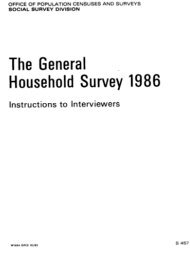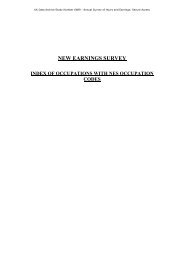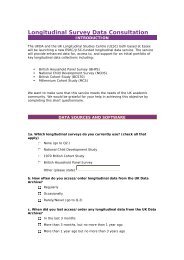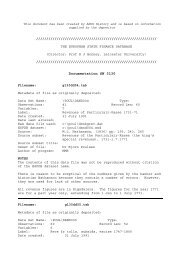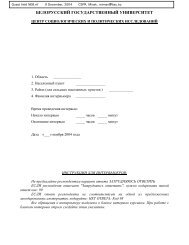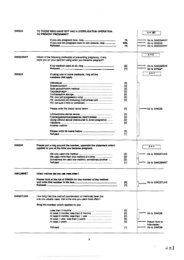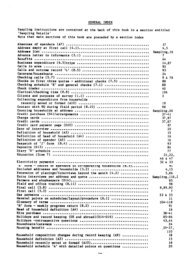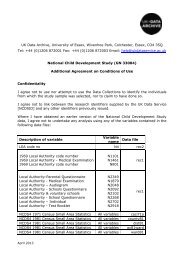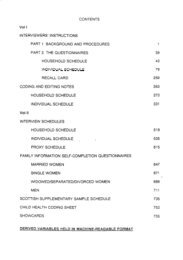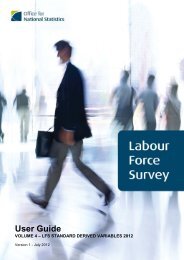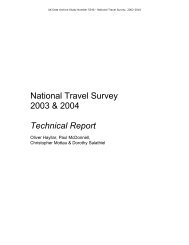The Seven Principles of Public Life - ESDS
The Seven Principles of Public Life - ESDS
The Seven Principles of Public Life - ESDS
Create successful ePaper yourself
Turn your PDF publications into a flip-book with our unique Google optimized e-Paper software.
epresentative sample <strong>of</strong> 1,000 adults aged 18 and over living in private households in<br />
Great Britain, excluding the highland and island areas <strong>of</strong> Scotland. This is the type <strong>of</strong><br />
design typically used in high quality face-to-face interview based social surveys, such as the<br />
British Social Attitudes Survey, the British Election Study and the British Crime Survey.<br />
A total <strong>of</strong> 1,728 addresses in 72 post code sectors was originally issued to interviewers. On<br />
the assumption that 10 per cent <strong>of</strong> addresses would not contain a private household and<br />
that 65 per cent <strong>of</strong> selected adults would take part in the survey, this sample would yield<br />
around 1,000 interviews. However, because co-operation levels were lower than expected,<br />
it was necessary to issue additional sample and, towards the end <strong>of</strong> fieldwork, to <strong>of</strong>fer<br />
respondents a £10 incentive to take part in the survey. When fieldwork was closed, 2,208<br />
addresses in 92 post code sectors had been issued, yielding a total <strong>of</strong> 1,097 usable<br />
interviews from 2041 in-scope addresses. 5 This represented a response rate at in-scope<br />
addresses <strong>of</strong> 53.7 per cent.<br />
Although the response rate was lower than had been anticipated, it is not far below the<br />
response rate <strong>of</strong> 61 per cent achieved on the most recently published BSA (Park et al., eds.<br />
2004, p. 264). In spite <strong>of</strong> the relatively low response rate, the demographic pr<strong>of</strong>ile <strong>of</strong> the<br />
achieved sample, after design weighting had been applied to correct for inequalities in<br />
selection probabilities inherent in the sample design, reflected the population pr<strong>of</strong>ile<br />
sufficiently well for non-response weighting to be unnecessary.<br />
A detailed account <strong>of</strong> the survey design, methods and response rates is provided in the<br />
Technical Appendix.<br />
Structure <strong>of</strong> the report<br />
<strong>The</strong> findings <strong>of</strong> the survey are reported in eight main chapters.<br />
Chapters 1 and 2 aim to set the scene for the findings reported in Chapters 3 to 8. Chapter<br />
1 examines respondents’ own perceptions <strong>of</strong> what influenced the opinions they expressed<br />
in the survey, how strongly these opinions were felt and to what extent they were based on<br />
knowledge or ignorance <strong>of</strong> the subject matter; Chapter 2 looks at how widely public <strong>of</strong>fice<br />
holders <strong>of</strong> different types are trusted to tell the truth and how they compare with other<br />
pr<strong>of</strong>essionals in this respect.<br />
5 All addresses except those that were untraceable; not yet ready for occupation or empty; derelict or<br />
demolished; business or institutional premises; contained nobody aged 18+; or were out-<strong>of</strong>-scope for<br />
another reason.<br />
20 BMRB International Report: Survey <strong>of</strong> public attitudes towards conduct in public life



